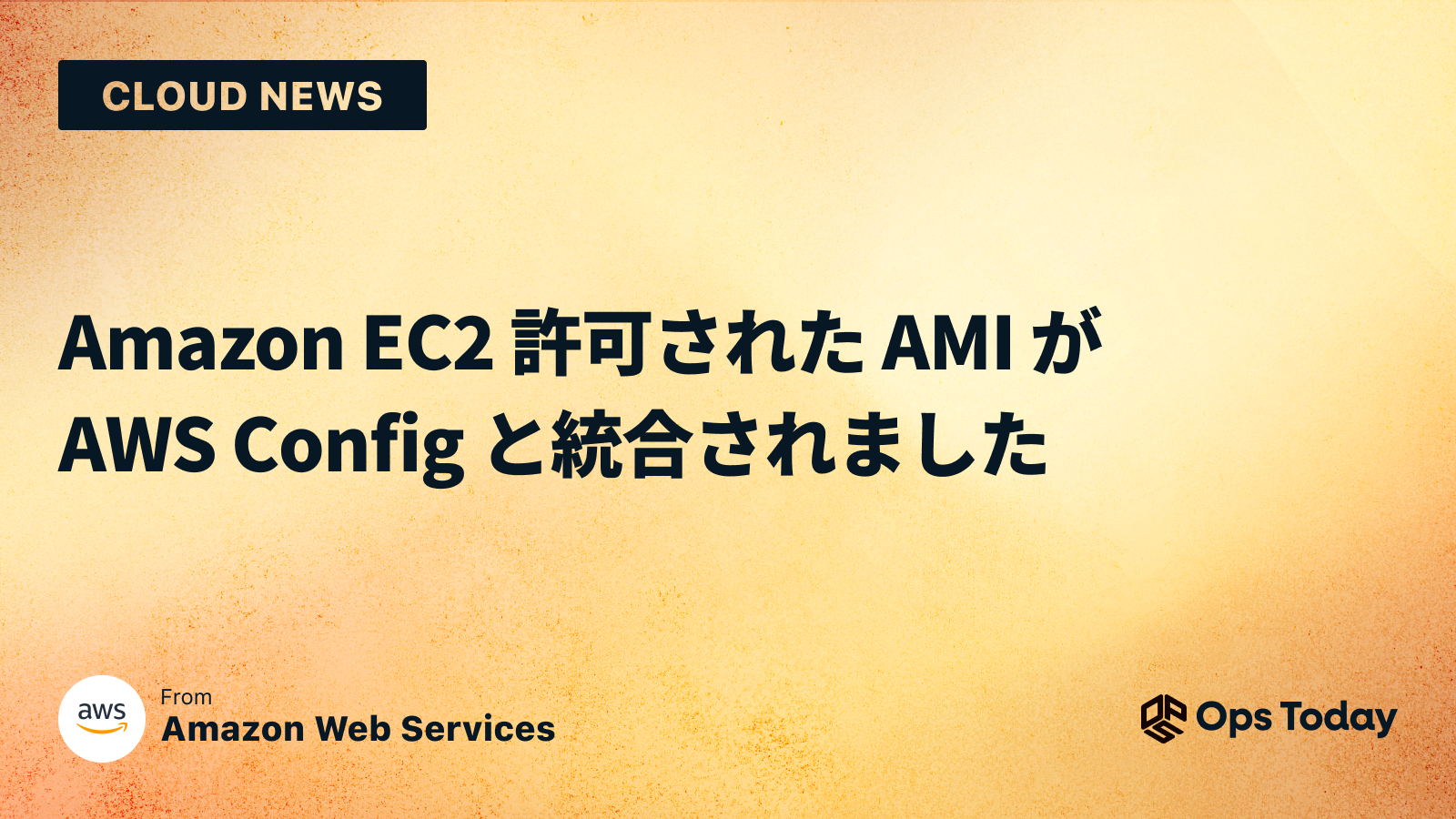
Amazon EC2 許可された AMI が AWS Config と統合されるようになりました
本記事は、2025 年 3 月 11 日にAWS公式サイトの What’s New with AWS? に掲載された英語記事を自動翻訳したものです。
ニュース内容
許可された AMI は、AWS アカウント内での Amazon マシンイメージ (AMI) の検出と使用を制限できるアカウント全体の Amazon EC2 設定で、AWS Config と統合されました。AWS Config ルールを使用して、許可された AMI によって許可されていない AMI を使用して起動されたインスタンスを自動的に監視、検出、および報告できるようになりました。
これまでは、インスタンスの起動を監視し、許可された AMI を有効にした場合の影響を評価するには、カスタム スクリプトを作成する必要がありました。許可された AMI と AWS Config の統合により、新しい AWS Config ルールを使用して非準拠のインスタンスを追跡および検出できるようになりました。このルールを許可された AMI の監査モード機能と組み合わせて活用することで、インスタンスの起動パターンに関する貴重な洞察を得て、より厳格な制御を適用する前に潜在的な問題を特定できます。このルールは、既存のインスタンスをスキャンして新しいインスタンスの起動を監視し、承認されていない AMI で起動されたインスタンスにフラグを立てます。この機能により、アカウントで許可された AMI を有効にする前に違反を積極的に特定して修正できるため、AWS 環境全体のガバナンスが簡素化されます。
デフォルトでは、このルールはすべての AWS アカウントで無効になっています。AWS CLI、SDK、またはコンソールを使用して有効にできます。詳細については、ドキュメントをご覧ください。
原文
Allowed AMIs, an account-wide Amazon EC2 setting that enables you to limit the discovery and use of Amazon Machine Images (AMIs) within your AWS accounts, now integrates with AWS Config. You can now use AWS Config rules to automatically monitor, detect, and report instances launched using AMIs that have not been allowed by Allowed AMIs.
Prior to today, you had to create custom scripts to monitor instance launches and assess the impact of enabling Allowed AMIs. Now with the integration of Allowed AMIs with AWS Config, you can track and detect non-compliant instances using the new AWS Config rule. By leveraging this rule in conjunction with the audit-mode functionality of Allowed AMIs, you can gain valuable insights into your instance launch patterns and identify any potential issues before enforcing stricter controls. This rule scans existing instances and monitors new instance launches, flagging instances launched with unapproved AMIs. This capability enables you to proactively identify and remediate violations before enabling Allowed AMIs in your accounts, simplifying governance across your AWS environment.
By default, this rule is disabled for all AWS accounts. You can enable it by using the AWS CLI, SDKs, or Console. To learn more, please visit our documentation.


